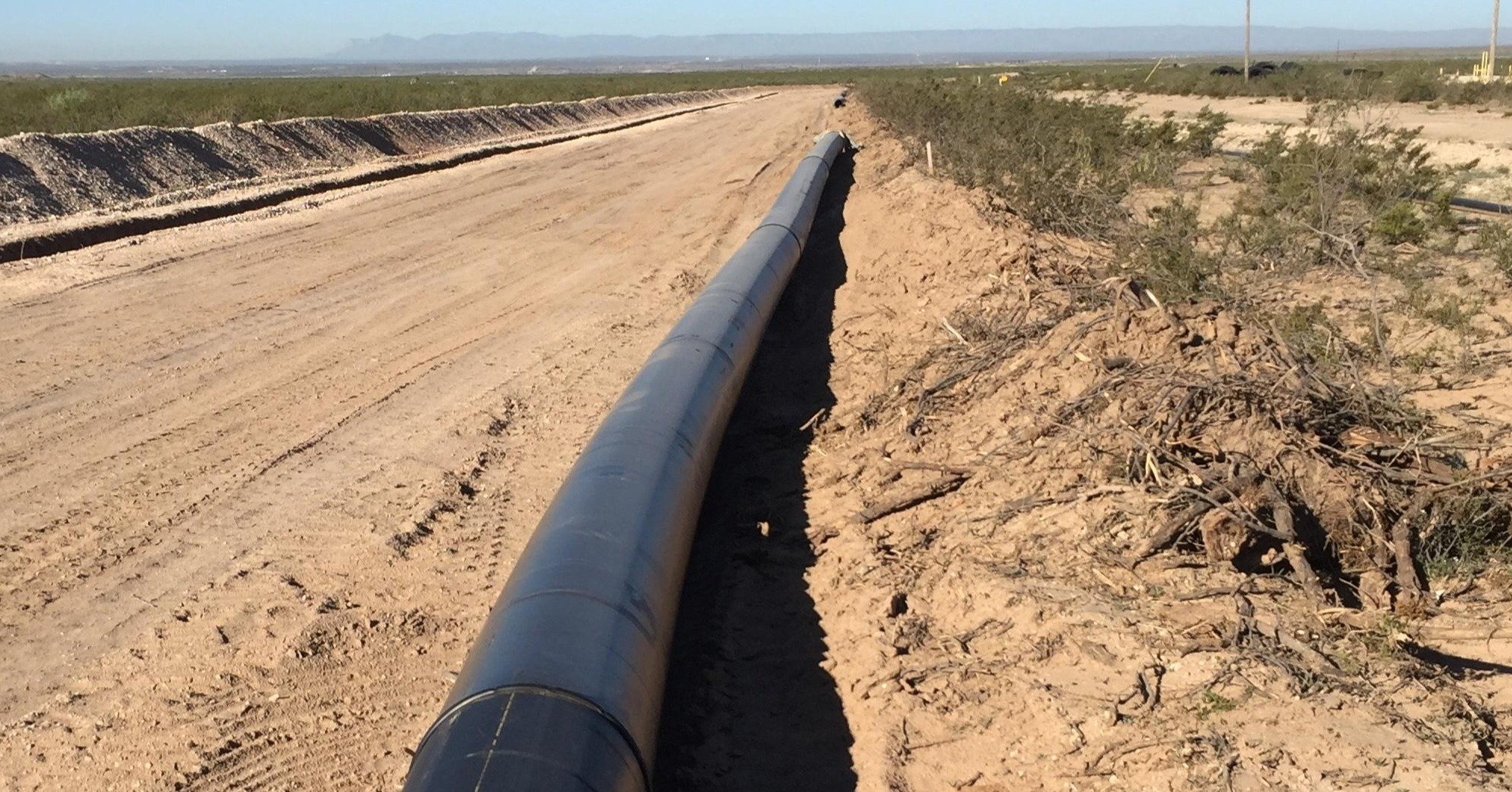HDPE Pipe Installation Methods
There are almost as many installation methods for HDPE pipe as there are applications, sizes and colors. This article describes six of the most common methods. Detailed descriptions of each can be found in the Plastics Pipe Institute (PPI) Second Edition Handbook of PE Pipe 2008.
Pipe Bursting
Pipe bursting with HDPE pipe has become a practical solution for replacing/rehabilitating the nation’s aging infrastructure. Pipe bursting is a trenchless method to replace buried sewer and water piping without the need for a traditional construction trench and associated equipment.
In this process, HDPE pipe is pulled through existing pipe, essentially ‘bursting’ the older pipe with new high-density polyethylene. This technique can be used to replace several types of older pipe including asbestos cement (AC) pipe, vitrified clay pipe (VCP), ductile iron, cast iron, plain concrete, plastic and reinforced concrete pipe (RCP). This less-invasive method leaves the remnants of the old pipe in place; no digging, haul-off or disposal is needed. This method can also be more cost effective. For example, other methods of removing AC pipe are three to five times more expensive than pipe bursting. The pipe bursting method is in full compliance with all federal regulations and guidelines.
Horizontal Directional Drilling (HDD)
Horizontal Directional Drilling (HDD) is often used to install HDPE pipe in situations where an obstacle, either above ground or below the surface, does not allow traditional installation methods to be used. In this method, a small borehole is drilled under the obstacle that must be crossed, such as a highway or river. Another larger bit, or reamer, is run through the hole a second time, increasing the hole size. Several reamer runs of progressively larger sizes may be necessary to reach the desired hole size. Finally, the pipe is pulled through the hole and connected to the line. The fusion joints and standard lengths of 40 or 50 feet reduce the number of overall joints in the pipe and allow for tougher handling of material with less concern for damage compared to other materials.
Micro-Trenching
For installing smaller conduit lines such as Internet, electrical and microduct products, micro-trenching presents the best option. In this method, a small vertical trench or slot is cut next to the highway, street or sidewalk and the line placed and covered. This can be performed quickly, without impeding busy traffic areas, and does not require heavy equipment or excavation.
Benefits of micro-trenching include minimal traffic disruption, time and material savings.
Plow
In this method, a long, narrow trench called a furrow is created by a plow blade pulled by a tractor or mounted to a railroad car. The furrow is cut in the earth and conduit is placed through the plow’s chute. As opposed to trenching, the plow method does not actually remove soil from the trench. It only displaces the soil as the plow is dragged through the ground while the conduit is installed.
Direct Burial
HDPE pipe can be installed via direct burial safely at depths from 2 to 25 feet where no traffic is present and from 3 to 25 feet where a live load is present. With this method, a trench is dug, the pipe is laid in the trench and the trench is filled back in. However, there are many parameters to consider with direct burial including foundation preparation, bedding and fill material, length and depth of trench, pipe diameter and testing.
Slip Lining
Slip Lining will help implement many of the infrastructure upgrades needed across the country. In this method, new HDPE pipe sticks are inserted at strategic access points in the older, deteriorated line. The HDPE sticks are joined into a new continuous line throughout the existing pipe structure. This technique can be used to rehabilitate gravity sewers, sanitary force mains, water mains, outfall lines, highway and drainage culverts and other piping structures with extremely satisfactory results. Slip lining has been used to restore pipe as small as one inch, and there are no apparent maximum pipe diameter limits.
Installation Considerations for Microduct
Microduct products may be installed in direct burial applications via micro-trenching or in microduct pathways via air blowing techniques or traditional manual cable pulling/pushing. For outdoor applications, Microduct products are easily and quickly installed in direct buried applications using minimally invasive micro-trenching equipment.
Use our Microduct Fiber Fill Calculator to determine the right HDPE Microduct piping configuration for your project.
Air blowing methods (ABC) installations are performed by an air blowing technique that reduces the risk of damage to the fiber cable, accelerates installation time and increases the installation distance.
For indoor applications such as optical fiber subscriber drop cable, aerial installation is a proven option. In this method, the cable is suspended from the ceiling in the building raceway. This option allows for future upgrades with minimal disruption.
Why UPS?
UPS manufactures HDPE pipe for the water, sewer, oil and gas, mining, power, communications and renewables industries. No matter which installation method you’re using need, UPS has the pipe you need. We can advise on installation best practices and support your team throughout the entire process.


